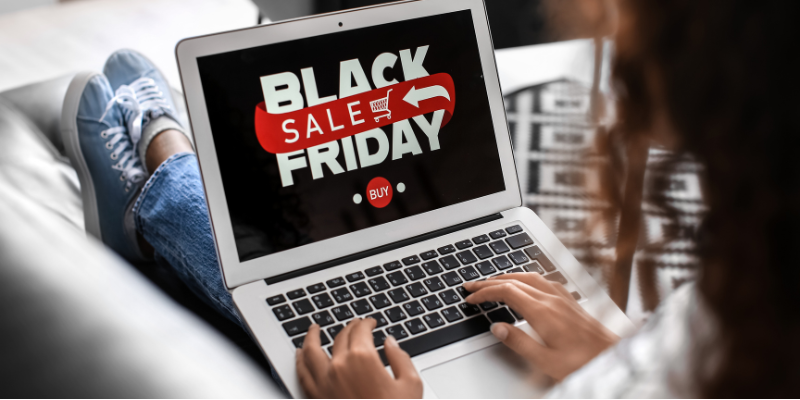🌟 New year, new you 🌟 2021 is the year you’ll finally stop managing to-dos on sticky notes taped to your laptop and losing sleep over that deadline looming in the upcoming week.
Being a successful event producer requires tools that allow you to focus on creating exceptional guest experiences, not wondering where you left that piece of paper you just had in your hand or worrying whether your team will finish a task on time. From project management to social media and beyond, here are the best tools you should consider using in 2021 if you’re an event producer.
Project Management Tools
Producing an event requires you to wear many hats. Keep everything in order and manage deadlines like a pro with one of these popular tools.
1. Asana
From tiny tasks to big goals, Asana organizes work so teams are clear on what to do, why it matters, and how to get it done. It’s a great place to manage your individual tasks as well as your team’s workload. Manage upcoming deadlines with the calendar view, or keep track of milestones in your event planning with features like hill charts.
2. Trello
Trello’s boards, lists, and cards enable teams to organize and prioritize projects in a flexible, easy-to-manage way. This is a great option if you have tasks which need to be completed before your team can move to the next step: simply drag and drop items from one list to another when a task is ready to move to the next phase.
3. Basecamp
Basecamp puts everything you need to get work done in one place. It can help your team communicate more efficiently and require less meetings to get the job done. With Basecamp, you break up your work into separate projects. Each project contains everything related to the work at hand; all the people involved, every discussion, every document, file, task, important date, etc.
4. Monday
Monday offers a simplified view of your project management workflows. Create customized workflows to help your team manage high volumes of work, and easily track work progress so you can focus on growing your event. Plan, organize, and visualize your event in one place, then assign team members to action items and monitor your progress at every stage.
Social & Promotional Tools
Planning a great event means nothing if no one shows up. Use one of these social tools to promote your event and get folks excited about attending.
5. Mailchimp
Mailchimp started as an email marketing platform and has built out a series of marketing automation tools that allow you to do so much more than send an email to a list of subscribers. Use one of their pre‑designed templates, upload your own, or create one from scratch using the drag‑and‑drop builder. If you’re producing multiple events, you can easily keep guests separated into different segments so they get information about the events they’re most interested in, and you can better engage your fans.
6. Hubspot
For events that need more advanced capabilities, Hubspot offers a full platform of marketing, sales, customer service, and CRM software. Keep track of your vendor and sponsor contacts, and manage your pipeline of leads with automated email series and powerful analytics. Turn on the marketing features (for an additional cost) if you want to track online ad campaigns, email marketing, and more all on the same platform.
7. Hootsuite
Manage multiple networks and social profiles with Hootsuite’s social media planning platform. The dashboard makes it easy to see recent posts on all of your profiles, view a calendar of upcoming posts, and copy post content from one channel to another.
8. Buffer
Buffer is a social media tool that provides you with beautiful, easy to edit templates as well as a platform for sharing your content on your social channels. Their Pablo template is great for anyone who’s new to social media professionally, is short on time, or doesn’t have the design software to create assets on their own. Plus, the template is completely free to use online!
9. Bitly
Tracking link performance on social media is important for any event producer, but it also means that your links can turn into unwieldy beasts that take up three lines of text on your posts. Clean those up with a link shortening site like Bitly. Bitly helps you shorten, create and share branded links with custom domains. There’s also a free version if you don’t care about customizing the link to your brand.
Design Tools
You may or may not have a graphic designer on staff for your event, but even if you do, these tools can be valuable for your team who need to be able to create and share assets quickly and edit on the go.
10. Unsplash
Unsplash has more than two million beautiful, free images and photos that you can download and use for any project. The images are completely free, even for professional or corporate use. Search for the right photo, then download it with one click and upload it to your email platform, social channel, or design tool of choice to edit as needed. It’s a must-have for any budget-conscious event producer.
11. Canva
Canva is a graphic design platform, used to create social media graphics, presentations, posters, documents and other visual content. It’s like design software for non-designers. Start with one of their templates or create your own from scratch, and access millions of stock images, plus other assets like shapes, icons, and animations. Share directly to your social media channels, or download assets as .pdf, .jpg, .png and more.
12. MotionLeap
MotionLeap lets you take static images and bring them to life with pseudo camera movements, motion overlays, and other animations that turn your photos into eye-catching videos. It’s only available as a mobile app (iOS or Android), but it adds a whole new dimension to regular ol’ photos and gives them that thumb-stopping appeal on social media. It’s easy to use, even if you have no design or video experience.
13. Pixlr
Pixlr is a free online photo editing platform that’s great for editing pics on the go. Whether you need to crop images to a specific size or aspect ratio, add a filter, or do more advanced layering work, Pixlr can handle it. It’s simple enough for novice photo editors to use, but powerful enough to meet the needs or more advanced pros.
Livestreaming Tools
Planning to livestream your event? It’s not quite as simple as opening your computer and hitting a “go live” button. You’ll need a video encoder to create your livestream, and a livestreaming platform to publish it. These tools can help you produce a professional livestream that will impress your fans.
14. Open Broadcaster Software (OBS)
OBS is a free and open source software for video recording and live streaming. It allows you to professionally produce a livestream, mixing live and recorded video, text and audio then stream to Twitch, YouTube and many other providers (including Passage Virtual Events). There’s a learning curve to get started, but once you’ve taken the time to learn the system the possibilities are endless.
15. StreamYard
StreamYard is the easiest way to create professional livestreams. It’s basically a live-streaming studio in your browser. Interview guests, share your screen, and much more while streaming directly to your Passage account or just about any other platform. It has fewer customization options than OBS but it’s much easier to use and requires little previous knowledge of encoding software to get up and running. We always recommend this for event producers planning their first livestreamed event.
Ticketing & Payment Tools
A ticketing system is essential to the success of your event. This is how your business makes money! Forget juggling multiple different systems for online & in-person payments, merchandise, and virtual event streaming. You need one system that can handle it all.
16. Passage
Passage gives you the power to not only sell tickets online and at the door, but to sell merchandise, concessions, even livestream your event online. Whether you need (socially distanced) assigned seating, virtual queues, timed ticketing, or front-of-the-line passes, Passage makes it simple to customize your ticketing and payments to your event’s unique needs.
Set up a demo today and we’ll show you how Passage can help you reach more fans and sell more tickets.
Organization Tools
Tired of performing the same monotonous task over and over again? Frustrated that you can never find the right document when you need it? Put one of these tools to work for you!
17. Google Drive
Google Drive is a file storage and synchronization service developed by Google. Store, share, and access your files and folders from any mobile device, tablet, or computer. Google’s powerful search capabilities are embedded in Drive, making it easy to find the exact file you’re looking for just by searching its name or contents. Access Google Drive with a free Google account (for personal use) or Google Workspace account (for business use).
18. Dropbox
Dropbox is a cloud storage platform that makes it easy to backup, sync, and share files you use for your events. You never have to worry whether the file you’re about to send is too big for email (just share a Dropbox link). Dropbox file sync works a little differently than Google Drive, and it tends to be faster to sync updated versions of a file to the cloud, which often makes this the preferred platform for those doing a large volume of design work.
19. Slack
Slack is faster, better organized, and more secure than email. It’s a channel-based messaging platform that helps your team find the information they need to do their best work. In Slack, team members send messages and share files in channels. Create channels for teams, projects, office locations, or anything else that’s relevant to your organization. You can search your team’s conversation history in Slack to find relevant messages, files, channels, and people.
20. Zapier
Zapier automates time-consuming tasks that eat up productivity. It connects more than 2,000 web apps through workflows known as “Zaps”. Zaps start with a trigger, an event that kicks off the workflow, and automate tasks in the background so you can focus on the important stuff.
21. Evernote
Evernote is an app designed for note taking, organizing, task management, and archiving. When inspiration strikes, take down a note in Evernote then save it for later or share it with team members. The platform syncs to all your devices, so you can tackle action items on the go. You can also use Evernote to capture meeting notes or organize tasks so they’re easy to reference later.
Which tools do you use to plan and manage your events? Let us know in the comments!












